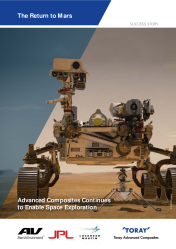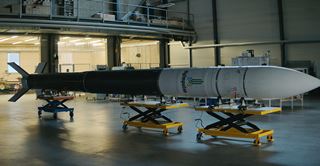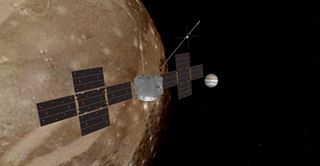Success Stories
The Return to Mars
Toray Advanced Composites is once again proving its strong heritage in space exploration. Building on multiple successful space missions, Toray partnered with NASA’s Jet Propulsion Laboratory (JPL), Lockheed Martin, and AeroVironment to support the Mars 2020 mission with advanced composites on the Perseverance Rover, Ingenuity helicopter, and the spacecraft’s protective aeroshell/heat shield.
Launched in July, the Mars 2020 mission is Toray Advanced Composites’ fourth visit to the Red Planet. The company’s highly engineered advanced composite materials contributed to the success of the MAVEN orbiter, Curiosity rover, and InSight lander. In addition, Toray composites have flown on countless satellites and exploratory space vehicles around the solar system.
“We feel our heritage in the space industry, as well as our ability to be collaborative on specialized projects such as the Mars 2020 mission, enforces our position as the ‘go-to’ composites partner for space applications,” says Scott Unger, Chief Technology Officer of Toray Advanced Composites. “Working with innovative companies such as JPL, AeroVironment, and Lockheed Martin to make space exploration continue is a privilege.”
Materials for Mission Success
To endure not only the extremes of space travel and planetary entry, but to then to successfully perform their critical missions, the Mars 2020 spacecraft and its vehicles depend on proven high-quality, high performance materials. Toray materials offer a pedigree of success in space, demonstrating attributes
including:
- Exceptional toughness and resistance to microcracking
- High glass transition temperature (Tg)
- Low coefficient of moisture expansion (CME)
- Low coefficient of thermal expansion (CTE)
- Low outgassing
- High tolerance to radiation exposure and thermal cycling
Toray Advanced Composite materials were chosen specifically for these properties and Toray’s successful history of performance in off-planet vehicles.
Taking the Heat
Designed by Lockheed Martin, the Mars 2020 heat shield, or aeroshell, requires strong, heat-resistant materials to protect the payload from temperatures exceeding 2093°C (3800°F) and pressures from the extreme 12,000 mph (19,312 kph) speed on entry. Adding to the design complexity, this aeroshell is also the largest ever built for a planetary mission, measuring nearly 15 feet in diameter (4.5 meters).
Lockheed Martin chose Toray’s high modulus cyanate ester prepreg to structurally reinforce the inside of the heat shield, which is protected on the outside by the tiled phenolic impregnated carbon ablator thermal protection system.
“High service temperature composite materials provided by Toray Advanced Composites enable fabrication of extremely lightweight and dimensionally stable entry vehicle structures for planetary exploration,” states David Scholz, Mars 2020 Aeroshell Principal Engineer for Lockheed Martin Space.
Strength to Explore
After very successful results using Toray Advanced Composites materials on the Curiosity rover, JPL returned to Toray for an increased number of applications on Perseverance. A variety of prepregs and uni-directional tapes were utilized to  strengthen and protect various structural parts of the rover, including the landing deck and honeycomb sandwich panel structural areas. These Toray composites were chosen for their long and successful heritage in space, low CTE, and low off gassing. Cyanate ester prepregs display characteristics similar to epoxy but were developed specifically for service in a vacuum as an alternative to epoxy, which is more hygroscopic (waterabsorbent) and tends to outgas in a vacuum. The blades of this aircraft are very different from those on terrestrial helicopters, calling for very specialized and proven materials.
strengthen and protect various structural parts of the rover, including the landing deck and honeycomb sandwich panel structural areas. These Toray composites were chosen for their long and successful heritage in space, low CTE, and low off gassing. Cyanate ester prepregs display characteristics similar to epoxy but were developed specifically for service in a vacuum as an alternative to epoxy, which is more hygroscopic (waterabsorbent) and tends to outgas in a vacuum. The blades of this aircraft are very different from those on terrestrial helicopters, calling for very specialized and proven materials.
The unique design is longer and thicker than those of terrestrial blades to take best advantage of the thin atmosphere.
Light for Flight
Toray composites make up arguably the most important component of JPL’s Ingenuity helicopter— the rotor blades. The blades of this aircraft are very different from those on terrestrial helicopters, calling for very specialized and proven materials. The unique design is longer and thicker than those of terrestrial blades to take best advantage of the thin atmosphere. The blades also have to be as light as possible and much stiffer than their terrestrial counterparts to maintain stability in the absence of a thicker atmosphere. To meet these requirements, AeroVironment, the JPL subcontractor manufacturing the ro tor blades, chose Toray cyanate ester unidirectional prepreg, which provides optimal mechanical properties, high radiation resistance, low moisture absorption, and low outgassing while retaining unparalleled toughness. This light composite excels in its ability to resist microcracking, even when subjected to thermal cycling and high levels of radiation exposure. It also displays low dielectric and low loss values and can be post cured, freestanding, to increase thermal performance for temperature-critical structures.
tor blades, chose Toray cyanate ester unidirectional prepreg, which provides optimal mechanical properties, high radiation resistance, low moisture absorption, and low outgassing while retaining unparalleled toughness. This light composite excels in its ability to resist microcracking, even when subjected to thermal cycling and high levels of radiation exposure. It also displays low dielectric and low loss values and can be post cured, freestanding, to increase thermal performance for temperature-critical structures.
Learn more about our materials for space







